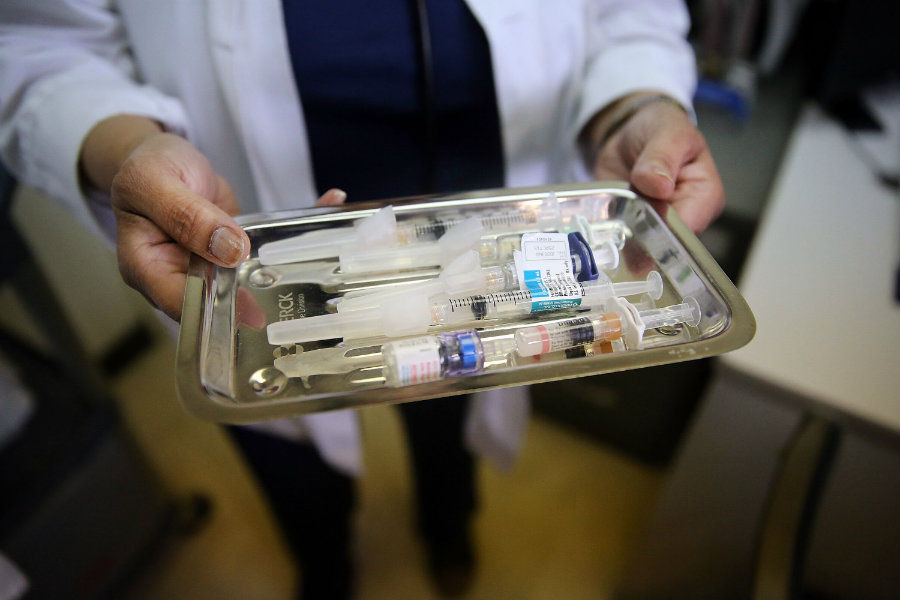A study to find the cure to Ebola, the fatal illness which had its outbreak in 2014 in West Africa, has ended having inconclusive results. The study was a control trial called PREVAIL I, made by the Partnership for Research on Ebola Virus in Liberia.
Sources differ when it is time to say if ZMapp, the treatment´s name, was a success or not. Given its inconclusive results, there is no real answer to this.

The researchers were primarily from the National Institute of Allergy and Infectious Diseases (NIAID), but it was also funded by the Republic of Sierra Leone Armed Forces and INSERM, France’s National Institute of Health and Medical Research, the Ministries of Health and the US Embassy staff in Liberia, Sierra Leone and Guinea, the US Centers for Disease Control and Prevention (CDC), the CDC Foundation, the US Biomedical Advanced Research and Development Authority and the US Defense Threat Reduction Agency.
ZMapp possesses a three monoclonal antibodies that are directed to attack the surface glycoprotein of the Ebola virus, which is an intravenous infusion based on the body weight of the patient. It is given three times once three days at the start of the treatment. The studies in non-human primates showed that it worked at its best.
Inconclusive results
Scientists running this project wanted to have 200 patients to test the drug, but given its slow development, when they were going to start the experiment, the illness outbreak was being managed and fewer cases of arising Ebola were found. Also, people were not eager to be part of an experiment in which the results were not promising. They did not have the certainty that they would survive the treatment. They ended testing only 72 patients.
54 of the patients were from Sierra Leone, 12 from Guinea, five from Liberia and one from the United States. This US patient was Dr. Kent Brantly, an American physician, who contracted Ebola while working in Liberia. The average age of the patients was 24, and more than half of them were women.
The experiment began in March 2015 with 12 to 24 hours of treatment.
The exact results
From the 72 people tested, 21 of them died in the process. This represents a 29 percent of fatality rate. Thirteen out of 35 who only received the standard care died (a 37 percent fatality rate), and eight out of 36 who received the standard care and the medical treatment died (a 22 percent fatality rate).
Regardless the outcomes of this project, sensitive data was found. From a subgroup of patients, they had more than a 50 percent chance of survival. 30 patients with the highest virus levels who received ZMapp plus the standard care had significant shorters stays in Ebola. Out of the 93 infusions, only eight halted for a severe adverse reaction to the drug, and out of eight people who died, seven passed away before the third ZMapp infusion.
What does this represent nowadays?
Even though the Ebola outbreak has ended, there are still patients desperately seeking for treatment that could give them the hope to survive. And this has raised some ethical questions such as if the drug should be given to patients out of the experiment knowing that there is no 100 percent assurance that it will work, or if patients that will consume it will just be under the placebo effect generated by the news of the treatment.
Whatever the answer to those questions might be, Mapp Biopharmaceuticals Inc. – based in San Diego – has a supply of ZMapp which will be available for patients in Liberia, Sierra Leone, and Guinea, in an emergency access program and after they pass each country’s regulatory approval process. They are already working on more of them as well.

Given the events of the Ebola outbreak on 2014, where 28,000 people were diagnosed, and more than 11,000 of them died, scientists see this as a step forward to finding a real cure. They say it could save at least 15 people for every 100 treated. They establish as well that it is better than receiving the standard care, which consists of giving fluid to avoid dehydration and maintain adequate blood pressure.
Dr. Jesse Goodman, director of the Center on Medical Product Access, Safety and Stewardship at Georgetown University in Washington D.C., who was not part of the creation of ZMapp, says that it has some efficiency and that it provides some lessons about doing research during the outbreak.
Dr. Richard Dave, deputy clinical director of the NIAID, stated that ZMapp is a positive light in the long research they have been doing for three years now. It will work as a model to future illnesses and other outbreaks.
It was demonstrated that ZMapp worked on 91,2 percent of the cases and declared that only being able to run the experiment was a victory per se and that the number of people who died using it was not statistically significant, which is the reason Mapp Pharmaceuticals will start spreading the drug.
Source: Los Angeles Times
